Knapton’s next stops
Use the links below to move around our Railway pages
Knapton Railway Station
History of the Line
Stations on the Coastal Line
| North Walsham | Mundesley on Sea | Trimingham | Sidestrand Halt | Overstrand |
| Cromer Links Halt | Cromer High |
| Cromer Beach | Roughton Road Halt |
Interesting Features on the Coastal Line
Coastal Stations
Our “What’s this?” screens
A Running in Board is a large sign showing the name of the railway station on the platform. The signs are intended to inform passengers of their location as their train pulls into the station, possibly while still moving at speed.
In normal circumstances a two-platform station has one running in board on each platform, situated near the end of the platform that the trains serving the platform will run in – hence ‘running in board’.
Did you know…
During the Second World War, running in boards in the United Kingdom were removed or obscured to prevent enemy spies or paratroopers from easily discovering their location
The halt is a lovely old fashioned term that conjures up images of rural quaintness that’s been lost over time, but that will live on in memories due to the unique part they played in the life of the communities they served.
Back in the day, a passenger station was defined as such by the fact of being able to issue tickets, and a goods station by virtue of being able to receive and handover merchandise/goods, etc to the public.
The halt, or station halt, was a station that had minimal facilities and where trains would usually only stop if the guard advised the driver of anyone travelling there or if there were passengers waiting on the (usually) single platform. They were usually unmanned which meant that tickets had to be bought on the train.
Those old enough may remember stations being “demoted to a halt” during the railways modernisation period, including our very own Paston & Knapton station in the 1950s.
Fare Evasion…
It’s worth remembering that a passenger on a train without a ticket could legitimately be there if they’d started their journey at a halt. This would not be the case where the passenger had boarded at a station.
If you have something to share…
If you have any photos or memories about our railway that you’d like to share, we’d love to hear from you. So if you’d like to;
- make a comment
- provide us with further information that we can include on our Railway pages
- or maybe suggest that we may have got something wrong
please click on the QuickLink below to go to our Contact page.
North Walsham Main
previous station | next station….……..
Mundesley | Sidestrand Halt
North Walsham was once the junction of five railways, with lines to Norwich, Aylsham, Cromer, Mundesley and Yarmouth. As a result of the commercial competition and a lack of cooperation between the various private railway companies in the late 19th century, the town originally had two railway stations alongside each other, the now vanished North Walsham Town plus the North Walsham Main which remains as North Walsham on today’s Bittern Line.
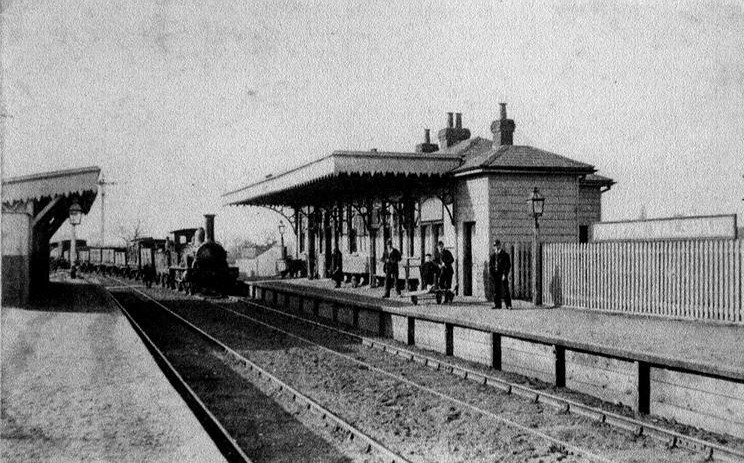
North Walsham Main station | 1880s
Sinclair Y class loco heads goods train for Norwich
North Walsham railway station dates back to 1874 and served the GER (Great Eastern Railway) from Norwich to Cromer High
On 27th September 1948 the station was renamed to North Walsham Main, only to be renamed back to North Walsham on 28th February 1959.
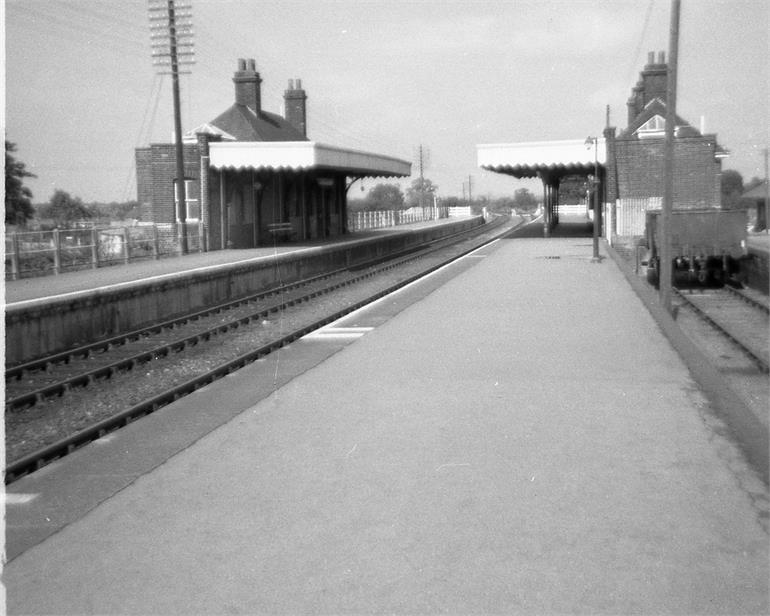
North Walsham Main railway station in 1971
In 2010 the station signs were changed to: “North Walsham, home of Paston College“.
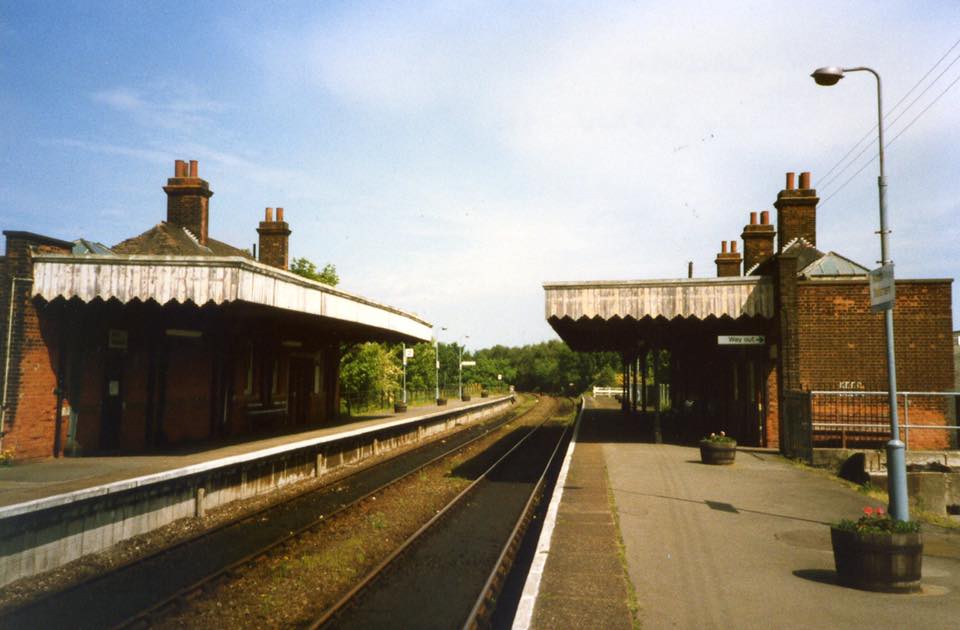
North Walsham Main station
just before demolition of its platform buildings
Today…
The station is the site of the only passing loop on the route (although trains can also pass in the station at Cromer), which has been worked remotely from Norwich since the line was re-signalled in 2000. The station goods yard, meanwhile, is the last operational freight location on the line; GB Railfreight dispatches regular bulk trainloads of petrochemicals (gas condensate piped in from various offshore North Sea gas fields) from here to Harwich International.
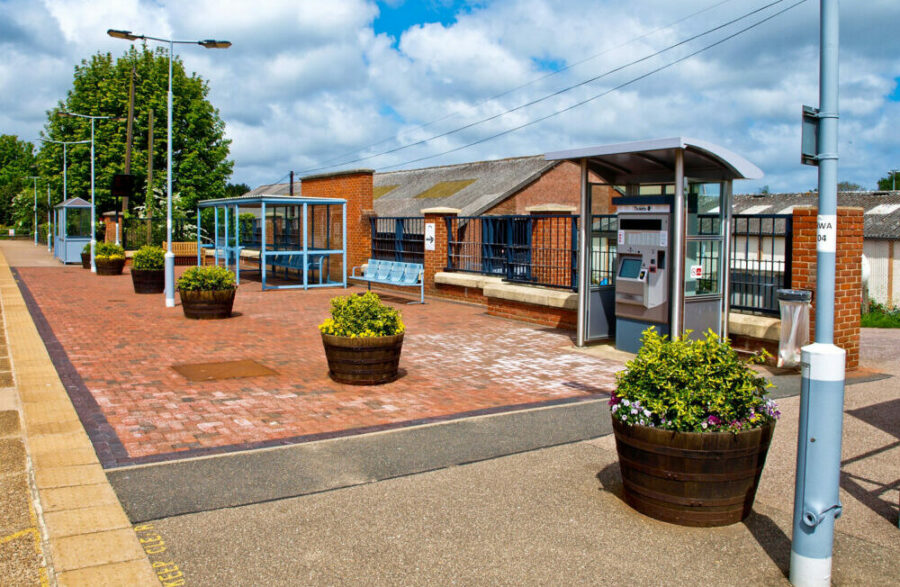
North Walsham station today
Trains run hourly between Norwich and Sheringham (slightly fewer services on Sundays) which alternate every hour between a stopping service (calling at all stations) and a semi-fast service that only calls at Cromer and Hoveton & Wroxham.
North Walsham Town
previous station | next station
End off the line | Paston & Knapton
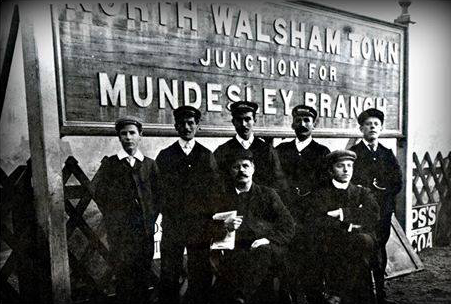
North Walsham Station Staff
Circa 1898 to 1906
North Walsham railway station, the original M&GNJR terminus, opened on 13th June 1881 and served the now closed lines to;
- Melton Constable via Mundesley and Sheringham (our line)
- Melton Constable via Aylsham
- Great Yarmouth via Potter Heigham
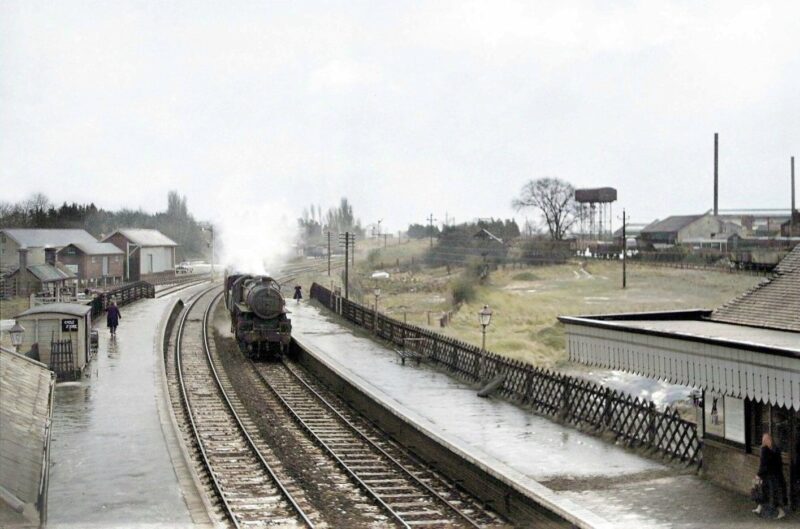
North Walsham Town station
9th January 1959
It was renamed North Walsham Town on 27th September 1948
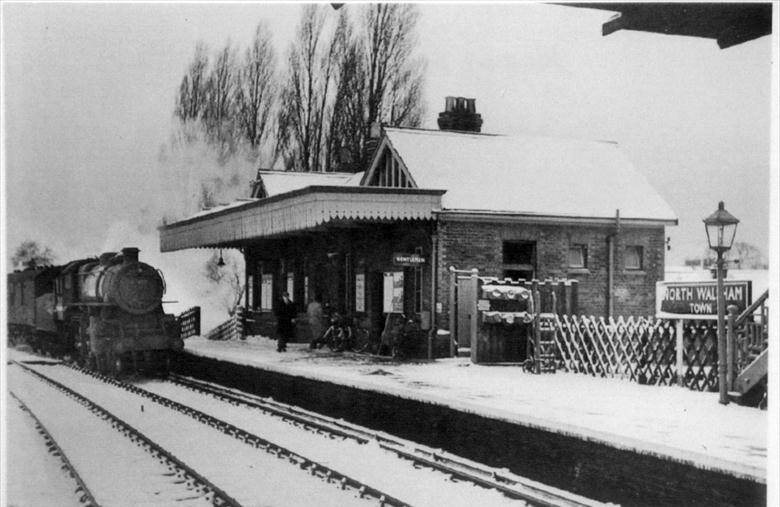
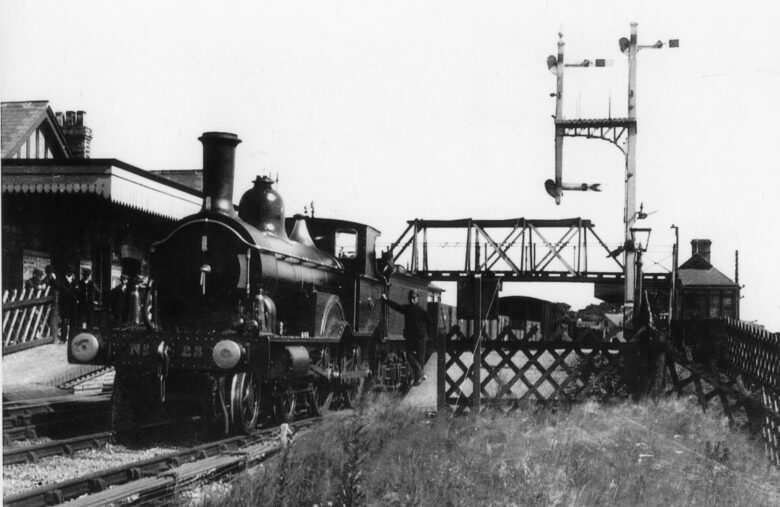
North Walsham Town railway station
British Railways closed the station to passengers on 28th February 1959 as it was considered to be unprofitable.
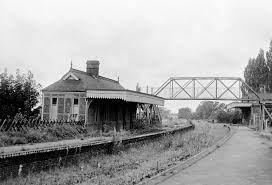
North Walsham Town railway station
in 1960, just after closure
For more information go to the North Walsham Heritage Centre
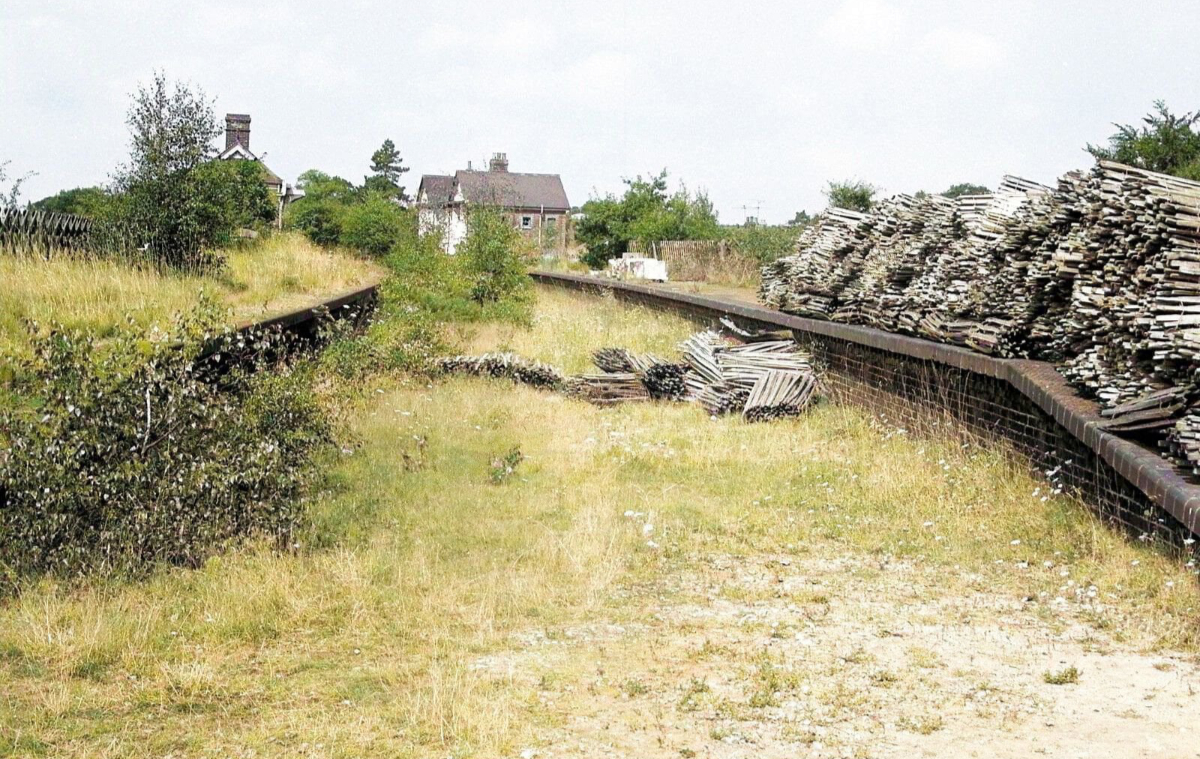
North Walsham Town railway station,
the site today
Today…
Sadly, nothing remains of the North Walsham Town railway station and the site is now used as a gas condensate rail terminal.
Mundesley
previous station | next station
Paston & Knapton | Trimingham
The fabulous Arts and Crafts extravaganza that was Mundesley-on-Sea railway station opened on 1st July 1898.
It had half-timbered gabled pavilions connected by a graceful, balustrade wooden arcade with a steeply-pitched roof which was punctuated by chunky chimney stacks and a slender clock tower with a cupola. It was opulent and spacious, boasting four platforms, two signal boxes and its very own engine shed with goods yard.
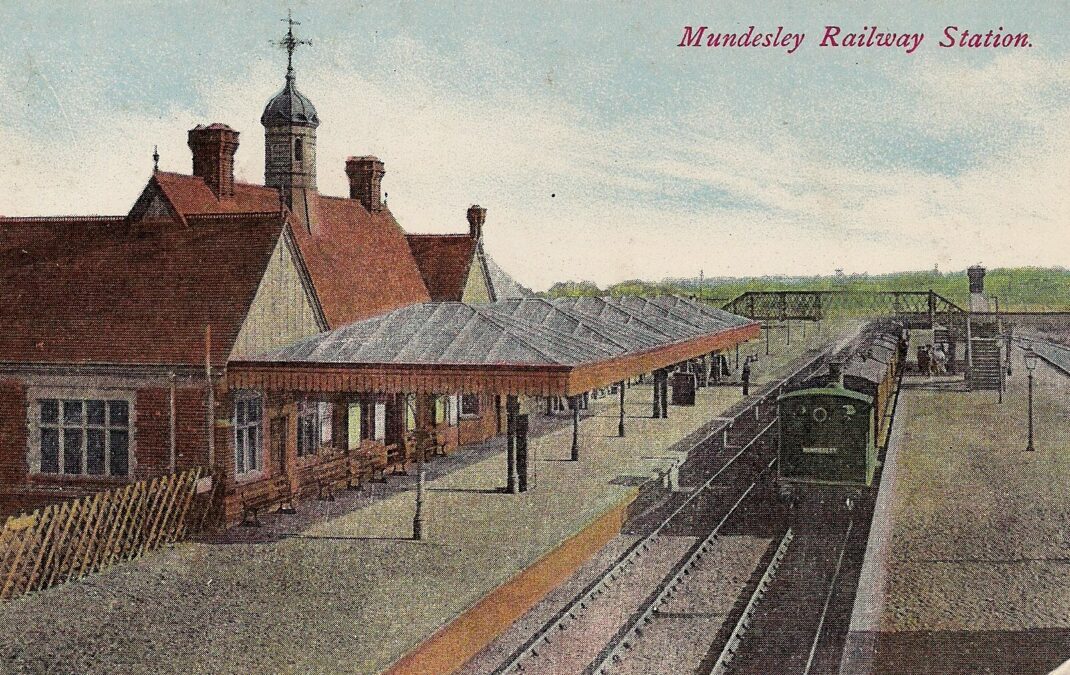
Mundesley station postcard
24th November 1915
The railway’s expectation was that Mundesley would develop into a major resort and this very fine, substantial railway station was built to impress and cater for the crowds of holiday makers that would surely come. They were so confident, they even located up to ten Camping Coaches a year here between 1938 and 1965.
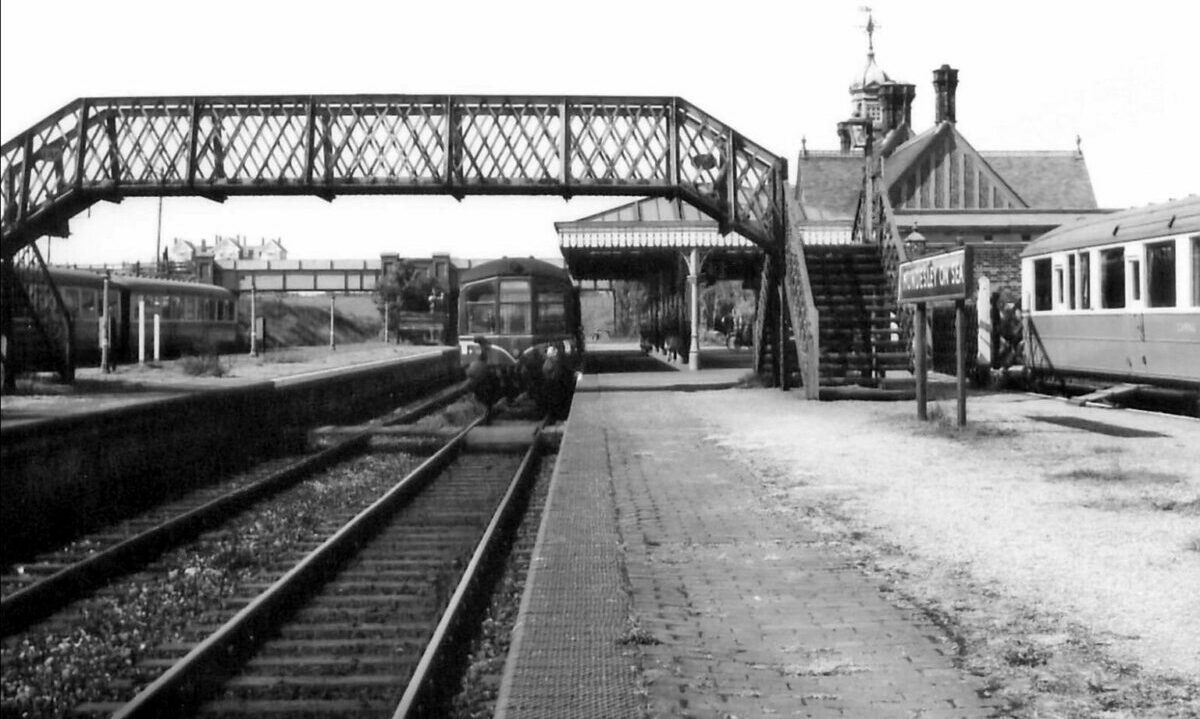
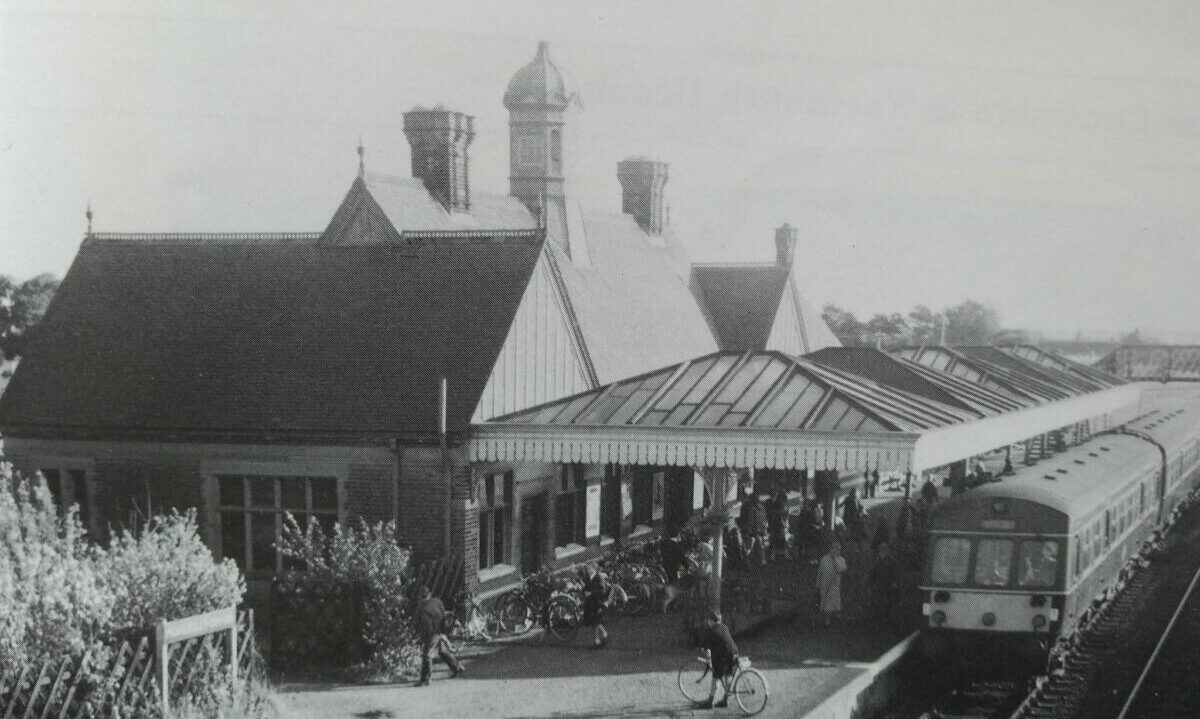
Unfortunately, the reality was somewhat different and the railway’s hopes and expectations never quite materialised. Passengers numbers started to fall as the Norfolk coast started to lose it’s holiday appeal and revenues generated rarely justified the amount of money the service cost.
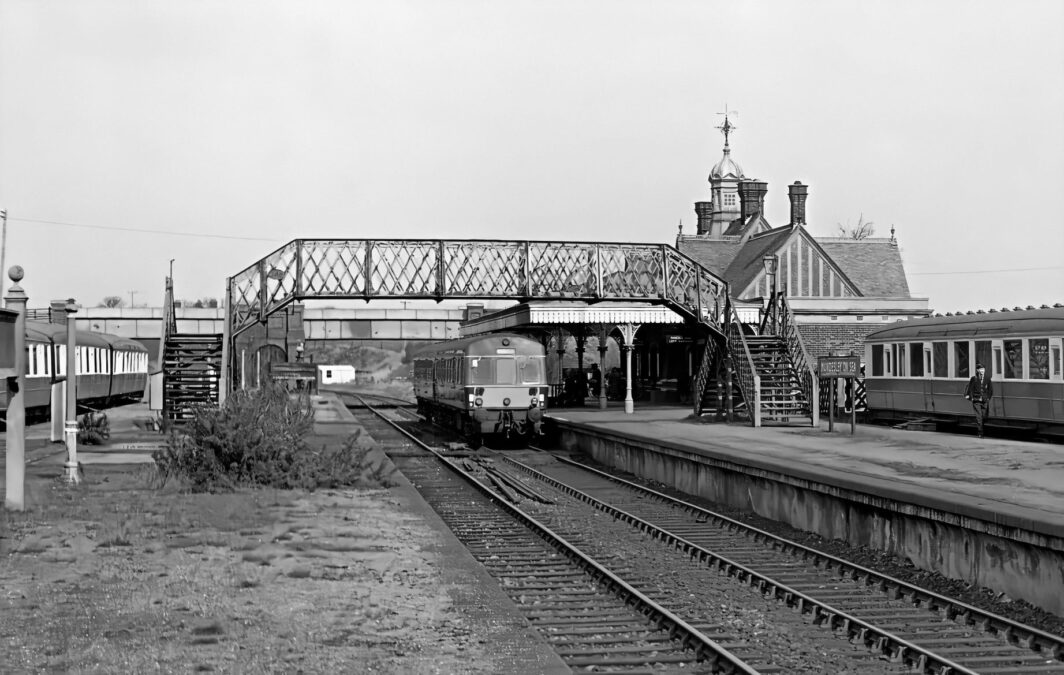
Mundesley Station | 1958-60
Camping Coach number 157 station
On 7 April 1953 the station became the terminus of the line from North Walsham when the onward route to Cromer was closed and so it remained until 5th October 1964 when the remainder of the route from North Walsham was closed to passengers and less than three months later, to freight as a result of Beeching’s recommendations.
The station finally closed for good on 28th December 1964 and was demolished shortly after.
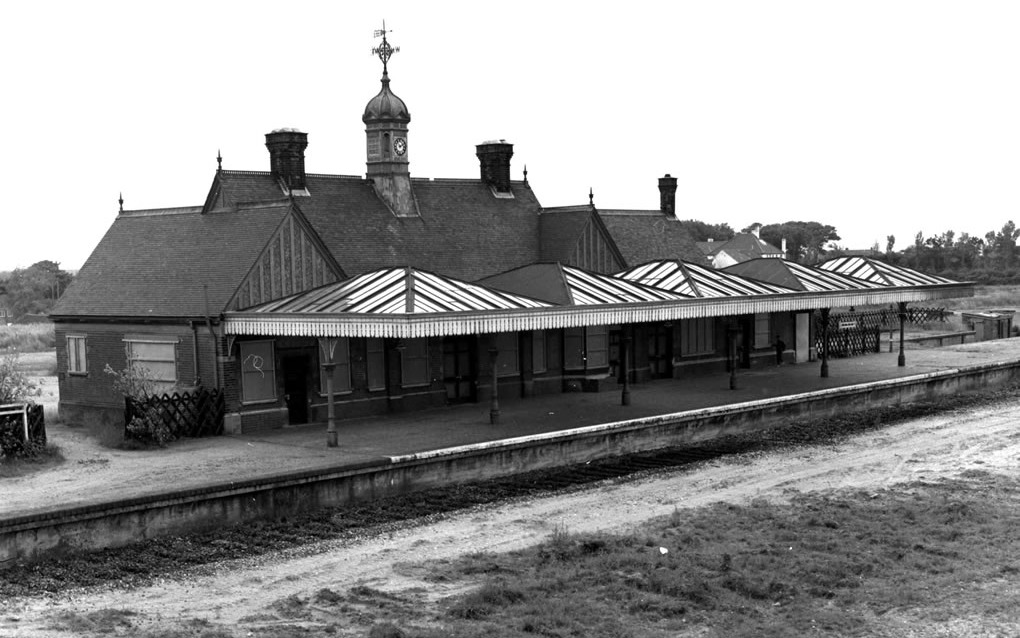
Today…
Today, nothing remains of what some people called “the most beautiful railway station in Norfolk“, the site having been redeveloped into a housing estate.
The Last Run (requiem for the Mundesley Line)
The Last Run is a short two page narrative by a writer who simply refers to themself as “mrw“. Clearly gifted, they paint a picture of what we can only assume was a journey that they had made many times on the coastal line between North Walsham and Mundesley, stopping at Paston & Knapton station along the way.
We don’t know who “mrw” is (or was) but it’s likely that he or she was a regular passenger on the line and, given their obvious local knowledge, probably lived locally at the time. However what we do know is that the last passenger train service on the line was on 28th December 1964, so given that this typed note was dated 1966 we like to think that one evening, a couple of years after they’d travelled on the line for the last time, they found themselves sat back in their cosy chair in front of a warm fire, their mind drifting back to cherished moments in time as they wrote this piece, recalling familiar scenes, picturesque views and wonderful memories, perhaps tinged with just a hint of sadness…
Who is “mrw”?
If you know who mrw is, or was, please let us know because with their permission, we would like to find out if they have any other memories that they’d like to share with us.
